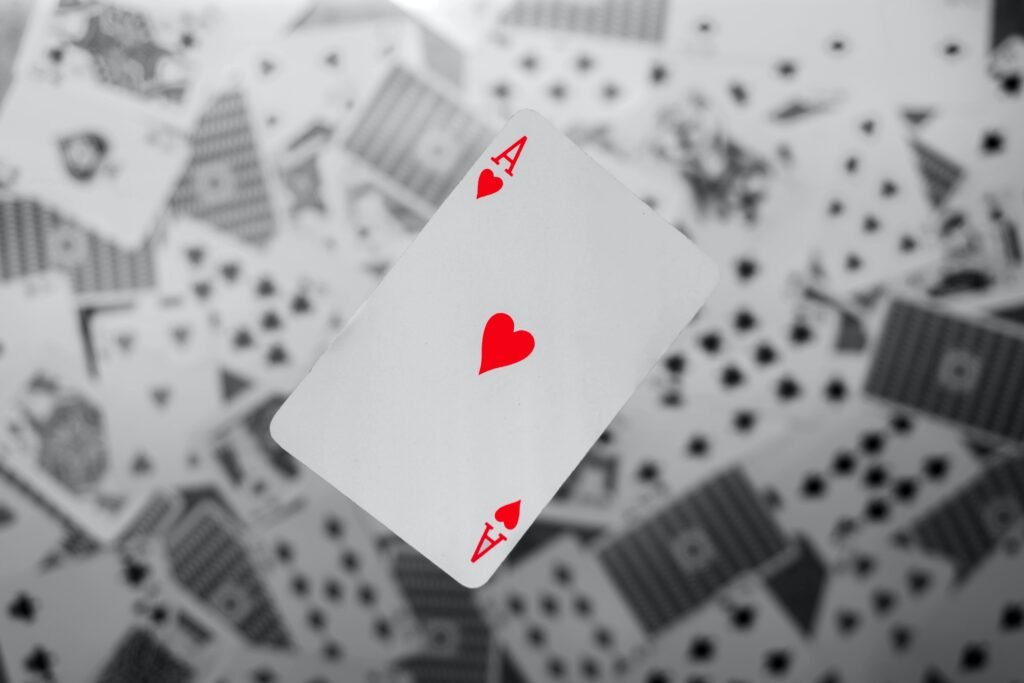In the captivating world of card games, knowing the basics can make a difference. You have the curiosity, perhaps even fascination, about something as simple sounding as the number of black cards found in a standard deck. In the article, “How Many Black Cards Are in a Deck”, you’ll uncover the straightforward answer to this, along with interesting tidbits about card colors, suits, and their significance in various games.

This image is property of images.unsplash.com.
Understanding Deck of Cards
Playing cards have been a source of entertainment and social enjoyment from ancient times. But do you understand your deck of cards? Let’s shed some light on this.
Familiarization with card decks
A deck of cards, also known as a pack or set of cards, is a small bound set of rectangular cards, usually made from heavy paper or thin plastic. Card decks are used for playing a variety of games, including poker, bridge, solitaire, and many more. Each card within a deck is unique, combining different elements such as suit and rank to differentiate one card from another.
Breakdown of a standard deck of cards
A standard deck comprises 52 individual cards. These cards are divided into four distinct suits: Spades, Hearts, Diamonds, and Clubs. Each suit contains 13 cards: Ace, 2, 3, 4, 5, 6, 7, 8, 9, 10, Jack, Queen, and King. Thus, the deck has 13 designs occurring four times each.
Defining Black Cards
While playing, you might have noticed some cards are black while others are red. Let’s delve into their significance.
Meaning of Black Cards in a Deck
In a deck of cards, the color of the cards is as important as the suits and numbers. There are two basic colors in a deck: black and red. Black cards are those from the suits of Spades and Clubs.
Black card suits identification
Identifying black cards is quite simple. The Spades are symbolized by an upward-pointing, black leaf-like shape, while Clubs are represented by a black three-leaf clover-like symbol.
Number of Black Cards in a Deck
The composition of a deck is balanced, let’s understand how.
Total count of black cards
Of the 52 cards in a deck, exactly half, or 26 cards, are black. This equal division provides a balance in card games.
Number of each black suit
Each black suit, Spades and Clubs, contains exactly 13 cards. So, altogether, the two black suits comprise 26 cards of the deck.
Black Cards in Different Deck Sizes
Deck sizes may vary according to the game or region. Let’s see how.
Black cards count in smaller deck sizes
In some games or regions, a smaller deck, often a 32-card or a 36-card deck, is used. In a 32-card deck, there would be 16 black cards, with 8 cards representing each black suit, while in a 36-card deck, the count would be 18 black cards with 9 from each suit.
Black cards count in larger deck sizes
In other games such as Canasta or Samba, a larger deck size might be used, often integrating two or three 52-card decks together. In such cases, the count of black cards would increase proportionately.

This image is property of images.unsplash.com.
Suit Distribution in a Deck
Suits play a key role in most card games. Let’s understand their distribution.
Count of suits in a deck
A standard deck of 52 cards contains four suits – Spades, Hearts, Diamonds, and Clubs. Each suit is equally represented with 13 cards each.
Black and red suit comparison
Two of these suits, Spades and Clubs, are black, and the other two, Hearts and Diamonds, are red. Thus, just as the Spades and Clubs amount to 26 black cards, the Hearts and Diamonds likewise constitute 26 red cards.
Black Cards in Different Types of Games
Did you realize that black cards could have varied implications in different games?
Role of black cards in poker
In poker, the suit of a card is often less significant than its rank. But still, black cards can play an essential role in flushes and other such hands where suit consistency is required.
Role of black cards in bridge
In bridge, suits are used to determine the trump suit, which can often tip the scale of the game. Black suits can make or break a game based on the distribution of hands.
Role of black cards in solitaire
In solitaire, alternating colors are necessary for card organization, so black cards often play a crucial role in the progression of the game.

This image is property of images.unsplash.com.
Significance of Black Cards in Card Games
Black cards have different implications, cultural references, and strategic importance in card games.
Influence of black cards in game outcomes
Black suits can influence the game outcome based on the specific game rules. Some games might have rules that treat black cards differently than red cards, resulting in varying outcomes.
Strategy revolving black cards
Strategies might incorporate consideration of the black cards in your hand, especially in games where suit consistency or color alteration is important.
Cultural associations of black cards
Certain cultures associate different meanings with black cards. For example, in some places, the Ace of Spades, a black card, is seen as a symbol of death or bad luck.
Trivia on Black Cards
Black cards come with some interesting trivia and historical significance as well.
Uncommon facts about black cards
Did you know that the King of Clubs is the only king without a mustache? Folklore also associates the four kings in a deck with famous kings from history, with the King of Clubs often identified as Alexander the Great.
Historical snippets related to black cards
Historically, the Ace of Spades, known as the “death card,” was used by American soldiers during the Vietnam War for psychological warfare.
Managing Probabilities with Black Cards
Once you understand black cards, you can better manage probabilities in card games.
Understanding probabilities of drawing black cards
The probability of drawing a black card from a full deck at the start is 26 out of 52 or 50%.
Implementing probability knowledge in card games
Understanding the probability of drawing black cards can enhance your card game strategy and increase your chances of winning.
Variations in Black Card Counts
Sometimes, the number of black cards may vary. How does that happen, and what does it mean?
Circumstances leading to varied black card count
Sometimes, specific games might require increased or decreased counts of black cards, or a miscount when tallying cards might lead to a varying number of black cards.
Impact of varying black card count in gameplay
More black cards can mean a higher probability of drawing them. In games where black cards have distinctive rules, this can heavily impact the gameplay.
In conclusion, the significance of black cards extends beyond just their color. These are elements that, once mastered, can enhance your enjoyment and skill level in card games!

